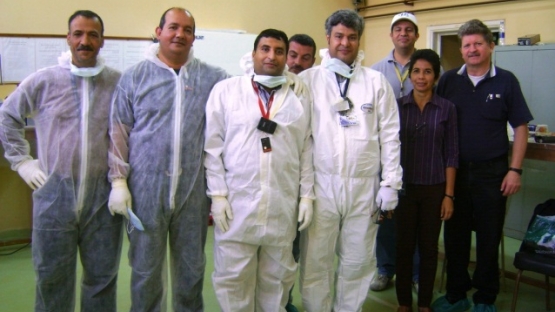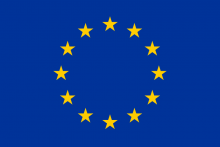A national workshop providing on-the-job training for operators tasked with the pre-treatment (conditioning) for the safe disposal of radium-226 and other disused sealed radioactive sources has taken place in Egypt as part of the IAEA's interregional technical cooperation project INT9176, 'Strengthening Cradle-to-Grave Control of Radioactive Sources in the Mediterranean Region'. The workshop was organized in collaboration with the Egyptian Atomic Energy Authority (EAEA), with the support of the European Union. It was attended by twelve members of the EAEA (managers, operators and technicians).
Radioactive sources are widely employed for beneficial purposes every day - in industry, medicine, agriculture and research, for example. However, radioactive sources that are outside effective control create safety and security risks. Non-regulated trade accidentally involving radioactive sources or contaminated materials can result in the inadvertent release of radioactivity to the environment. To protect the public from the hazards of ionizing radiation, "cradle-to-grave" control of radioactive sources is essential. The Egypt workshop focused on the latter part of the cradle-to-grave process, where disused sources are prepared for final disposal.
The first day of the workshop was dedicated to technical presentations on cradle-to-grave management of disused sealed radioactive sources (DSRS). Lectures on DSRS conditioning were provided by external experts, and in later sessions the working layout, operational procedures, radiation protection aspects and capsule welding techniques were discussed in detail.
The following four days were devoted to practical training for the local team, covering preparations for conditioning, and conditioning operations. Working shielding was erected on the working areas for each operation (source reception, encapsulation, welding, bubble test and containerization), and the welding machine was put into operation and tested. A ventilation system was installed and tested, and two local welders were trained in tungsten inert gas (TIG) welding techniques for stainless steel capsules. The radiation doses that the staff would receive during the DSRS conditioning operations were estimated and the local team was trained to do the calculations. Finally, cold runs of planned operations were conducted and all safety aspects were discussed. The IAEA technical officer inspected the operational area and verified that the working conditions fully met the technical requirements. Two additional cold runs were conducted with dummy sources, and this time the persons involved used their all protective clothing. After successful cold-run operations, the local team was ready for real operations, and the radium-226 sources to be conditioned were selected and segregated.
Twelve brachytherapy radium needles with a total activity of 18 mCi (670 MBq ) were conditioned into one capsule. The capsule was welded, tested and placed correctly in the lead-shielded storage container. The team checked for contamination and found none. No incident or contamination occurred during the source conditioning operation. The IAEA technical officer monitored all operations, which were conducted according to the written procedures and safety requirements. All operations were conducted by the Egyptian team, which demonstrated their capabilities to conduct such operations.
At the close of the workshop, the IAEA tem met with Mr. Abdel-Fattah, Chairman of the Egyptian Atomic Energy Authority, who noted that the support received from the IAEA and the EU under INT9176, and the effectiveness of the hands-on training, was highly appreciated by the Egyptian authorities.




